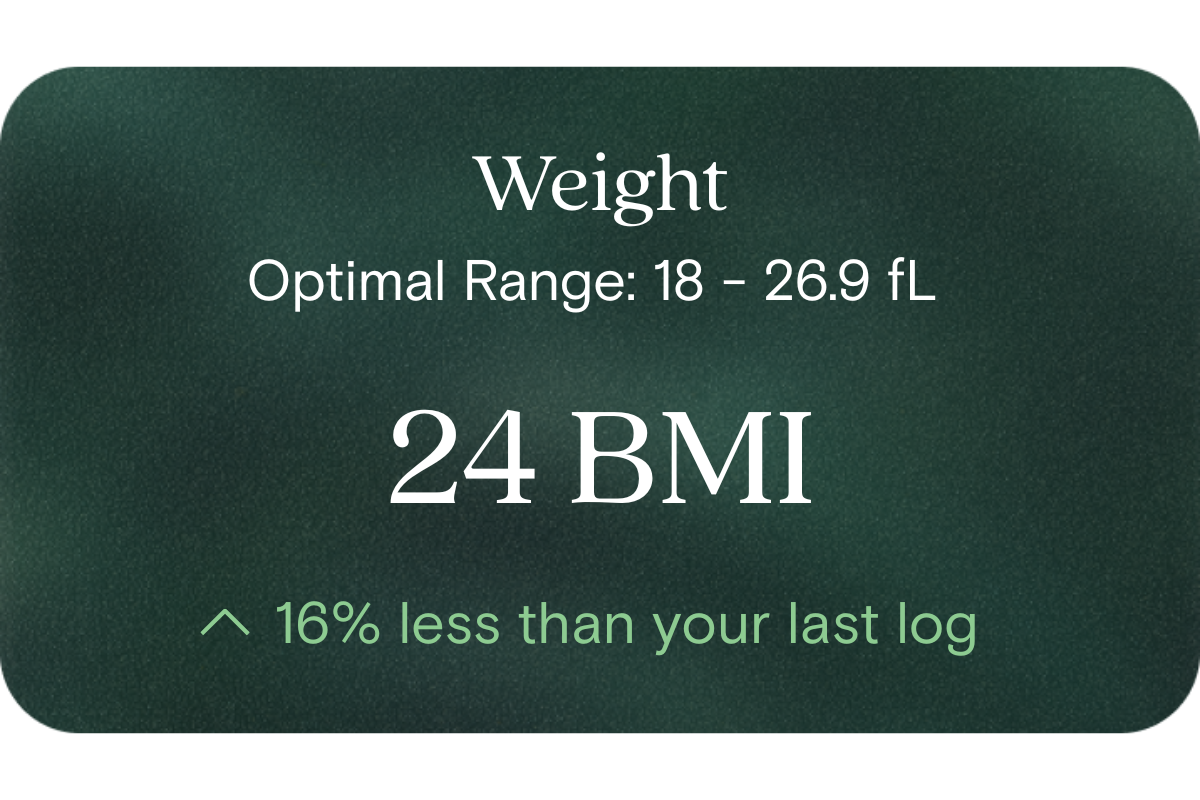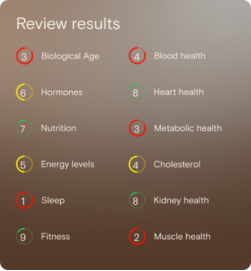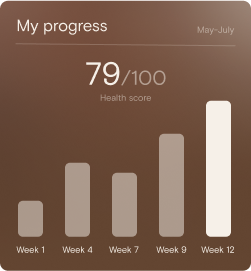What is Weight (BMI)?
Weight, measured as Body Mass Index (BMI), is a ratio of your weight (kg) to your height (m²). It provides an overall indicator of body composition, helping track whether your weight aligns with optimal wellbeing ranges.
Why does it matter for long-term health and wellbeing?
Maintaining a stable and healthy BMI supports metabolic efficiency, sustained energy, and physical performance. Tracking trends over time gives valuable insight into how your nutrition, exercise, and recovery habits influence your body’s long-term balance.
What’s an optimal level of Weight (BMI)?
- Optimal range: 18–24.9 (100%)
- Good range: 25–26.9 (80%)
- Improving range: Any BMI over 27 showing weekly improvement (60%)
- Sub-optimal range: 27–29.9 or below 18 (40%)
- Pay attention: ≥30 (20%)
What influences Weight (BMI) levels?
BMI can be influenced by dietary choices, daily movement, hydration, sleep quality, muscle mass, and genetics. Even small, consistent adjustments to food intake, physical activity, and rest can make a measurable impact over time.
What does it mean if Weight (BMI) is outside the optimal range?
A BMI below or above the optimal range may suggest that your energy balance or muscle-to-fat ratio could be improved. However, BMI is only one part of the picture — those with higher muscle mass, for example, may have a higher BMI without adverse effects. It’s best viewed in the context of other lifestyle metrics and overall wellbeing.
How can I support healthy Weight (BMI) levels?
- Prioritise whole, nutrient-dense foods and balanced portions.
- Incorporate regular strength and aerobic activity.
- Stay hydrated and maintain consistent sleep patterns.
- Track your progress weekly using tools like Vively for actionable insight.
This information is provided for general health and wellness purposes only and does not replace medical advice.
References
- Australian Government, Department of Health. Body mass index (BMI) and waist measurement.
- Cameron, A. J., Magliano, D. J., Dunstan, D. W., Zimmet, P. Z., Hesketh, K. D., Peeters, A., & Shaw, J. E. (2012). A bi-directional relationship between obesity and health-related quality of life: Evidence from the longitudinal AusDiab study. International Journal of Obesity, 36(2), 295–303.
- Avsar, G. et al. (2017). Factors Influencing the Incidence of Obesity in Australia. (PMC article)




















.png)
